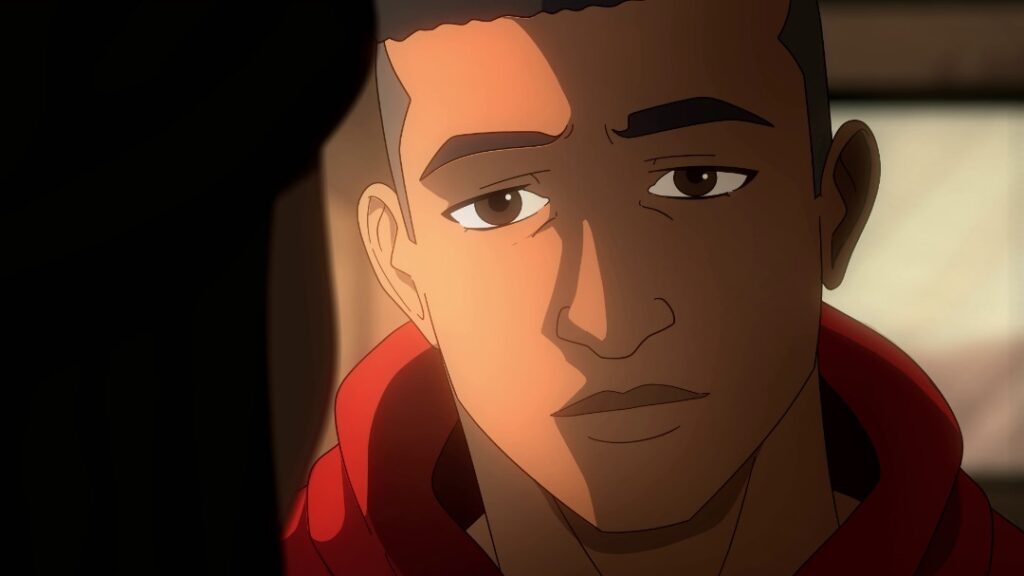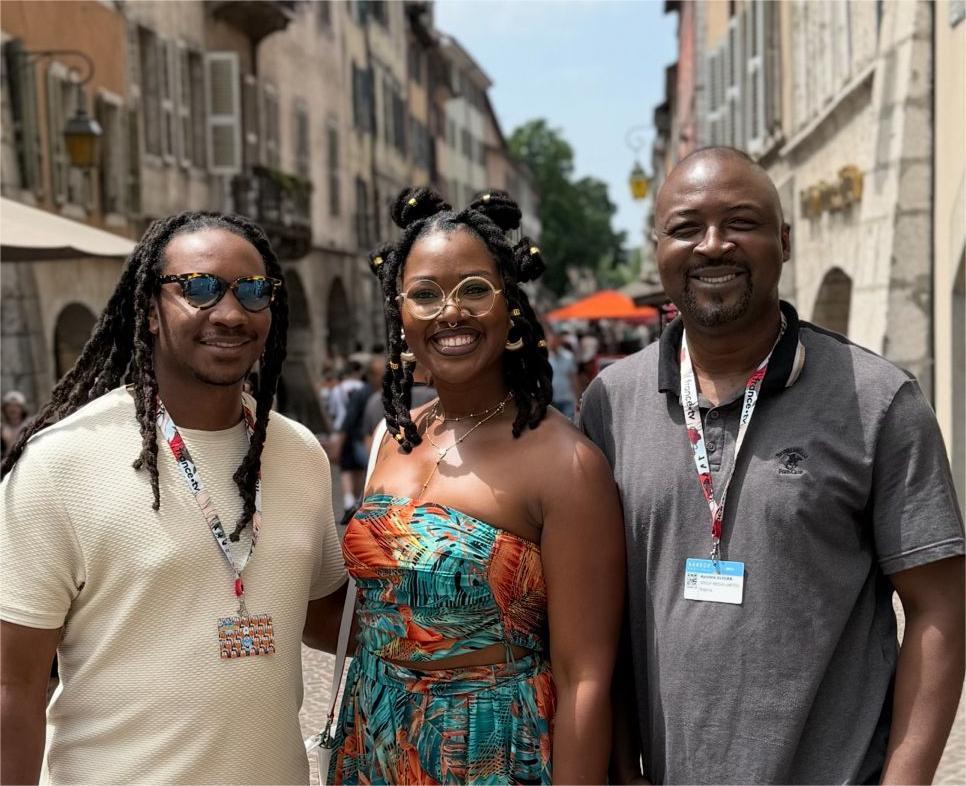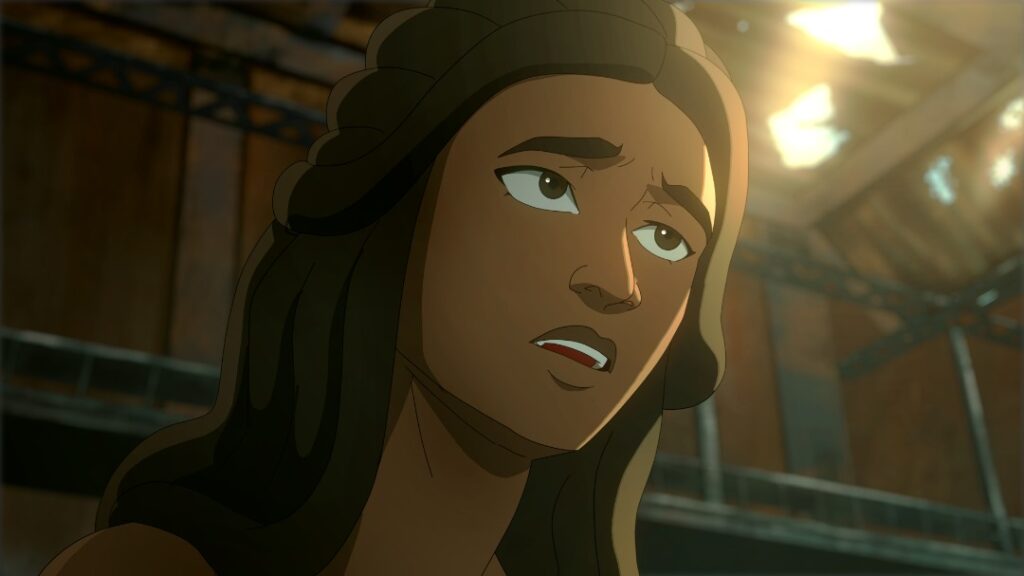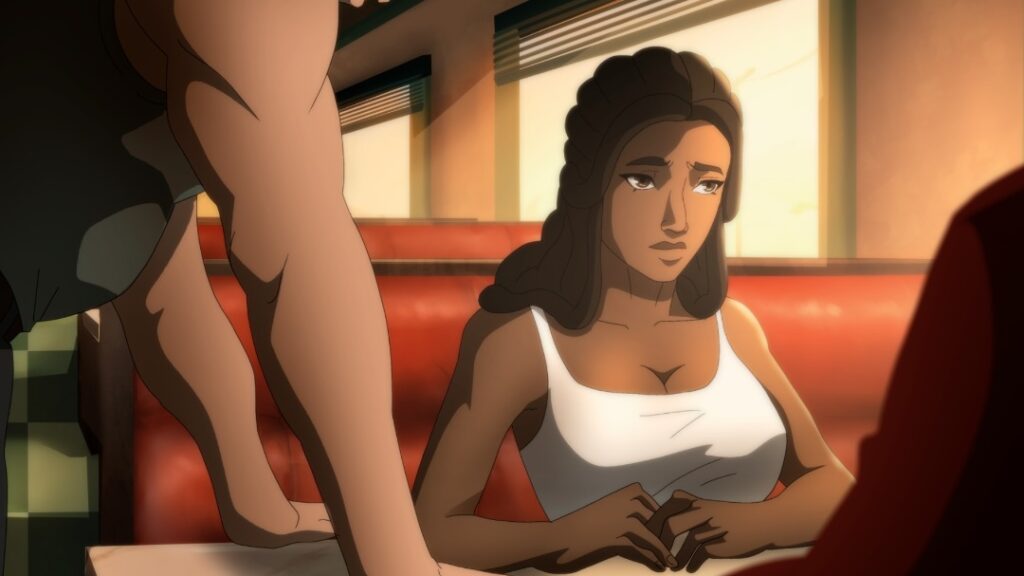In the ever-expanding world of comics and animation, new voices continue to shape how stories are told and who gets represented on the page and screen.
One such voice is Ashley A. Paige Van Da Cruize, the creator of NAMAKASI, a comic series that blends powerful storytelling, cultural richness, and a bold vision for the future of Black representation in animation.
A registered nurse by profession but a creative at heart, Ashley brings her unique experiences and cultural background into her work.
In this interview, she shares the inspirations behind NAMAKASI, her creative journey, and her hopes for its impact on audiences across the globe.
1. What inspired you to create the NAMAKASI comic book series, and what message do you hope it conveys to readers?
I love animation, I love anime, and I absolutely adore storytelling! However, I am a registered nurse. And that career has nothing to do with any of the above.
That said, because I am a creative at heart, I still found ways to allow my nursing career to inspire my storytelling career.
Being a nurse has allowed me to see so many things, I’ve seen so many triumphant medical cases, that I wanted to write a story that was associated with the power of the mind.
And how having the right mindset, and constant reassurance, could help you get through the toughest of situations.
2. Can you tell us about your background and how your experiences influenced the development of NAMAKASI?
Interesting question! So my background is actually Caribbean. My mother’s side is Trinidadian, and my father’s side is Guyanese. As the story develops, I do bring in Caribbean culture, but my intent was simply just to make it culturally robust.
In all transparency, I found that a lot of Caribbean customs and traditions are similar to those of many African customs and traditions.
And of course, I understand that there are a plethora of African countries that are individual and independent of one another when it comes to certain customs and traditions, but that also applies to the Caribbean.
My goal was really just to create, again, a culturally robust story. I wanted to put people from all areas of the world. I just wanted to create a story that shows that there’s more to see. There’s more to learn. There’s more to explore. You can never know too much.

3. How do you think NAMAKASI will resonate with Nigerian audiences, and what do you hope readers there take away from it?
So while I have been able to acknowledge that each Caribbean country and each African country has its own customs and traditions, they are still also able to relate to one another.
I also mentioned that there are a lot of customs and traditions that Caribbean and Africans share.
I’m saying all of this to say that I do believe that there will be a level of relatability. And at the very least, I do hope that there is excitement and joy associated with seeing more cartoon characters that look like us.
I want it to get to a point where it’s not as shocking or exciting to see cartoon characters that share characteristics of Afro-American, Afro-Caribbean, African, and Afro-Latinx & Caribbean individuals.
4. What led you to partner with SPOOF Animation to bring NAMAKASI to life as an animated film?
Well, for starters, SPOOF Animation is based in Nigeria. And I felt that because I’m writing a story that incorporates a lot of African customs.
I wanted to be able to communicate with a team that could answer my research questions as they pertain to certain cultures and customs, appropriately. I wanted to work with a team that I can relate to myself.
They are also the best 2D animation studio in Nigeria and Africa in my opinion and they do very great work. It was not a difficult choice to make actually.
And off course they believed in my comic book and partnered with me long before i even knew an Animation movie was possible. They are great guys and fun to work with.

5. You’ve said this animated movie is important for the Black community in America. Can you elaborate on the themes or messages you want to highlight?
While I do find that this animated movie is important for the Black community in America, it’s also important for the community in America that I grew up with immigrant parents, who had very different expectations and disciplinary actions from their American counterparts/classmates/friends.
Ultimately, the goal is just to get to a point in animation where we’re not as shocked and surprised when we see more Black animated characters.
6. How do you envision NAMAKASI influencing representation in comics and animation, and what impact do you hope it will have on the industry?
I hate to sound like a broken record, but I want this to be more common in the animation and comics industry. I want this to be more celebrated.
And I can’t just keep talking about things without making any moves to make it happen.
So essentially, I want to be a part of that change. I want to be able to look back on my creative works and be able to say that I have always done my absolute best to make my stories well rounded.

7. What challenges have you faced while creating NAMAKASI, and how have you overcome them
Well, for starters, when I first started writing the comics, I was completely unaware of how to write a comic book. I was writing it as if it were a novel, and my comic artist was very kind to educate me.
And it was from then that I realized that this is not just a creative journey. It’s an educational one as well. And that ultimately needed to slow the process down. I needed to take my time.
8. Can you walk us through your creative process when developing the story, characters, and world of NAMAKASI
Absolutely. So the reason why I chose for everything to start in New York is because that’s where I’m from. Especially in New York City with all of the boroughs. I just feel like New York City, Brooklyn, Manhattan, Queens, etc.
Are all culturally robust. You’ll walk down the street and every block you hear seven different accents, and that never gets old to me.
So the main group of characters, they’re all from different parts of the world, and that, to me, depicts New York City in a nutshell. People from all walks of life are friends.

9. How does your Indiegogo campaign fit into your overall vision for NAMAKASI, and what do you hope to achieve with this funding?
My Indiegogo campaign is meant to help us get through the first few stages of development. It’s meant to help us create a strong foundation.
So I didn’t want to bombard my campaign with a massive amount as the goal, because I felt that that was unrealistic, and it would prevent us from looking at this in a step-by-step process.
10. What message do you want to share with potential supporters of your Indiegogo campaign, and how can they get involved?
I want all of my supporters and potential supporters to know that I will do my absolute utmost best to deliver a beautiful story, well told. I am a storyteller at heart.
So, to see my stories come to life is a dream come true. I feel that even where I am at now in the process is a beautiful place to be.
So I want to express gratitude for those who have helped me get here, and I would like to express gratitude for those with beautiful intent and nothing but positivity when it comes to seeing me accomplish my goal.
Closing Thoughts
Ashley’s journey with NAMAKASI is one of persistence, vision, and passion. Drawing from her cultural roots, her professional background in nursing, and her love of storytelling, she is carving out a space where Black stories and characters can thrive in animation and comics.
With the support of platforms like Indiegogo and partnerships such as SPOOF Animation, NAMAKASI is poised to inspire audiences worldwide proving that stories rooted in authenticity and cultural depth resonate universally.